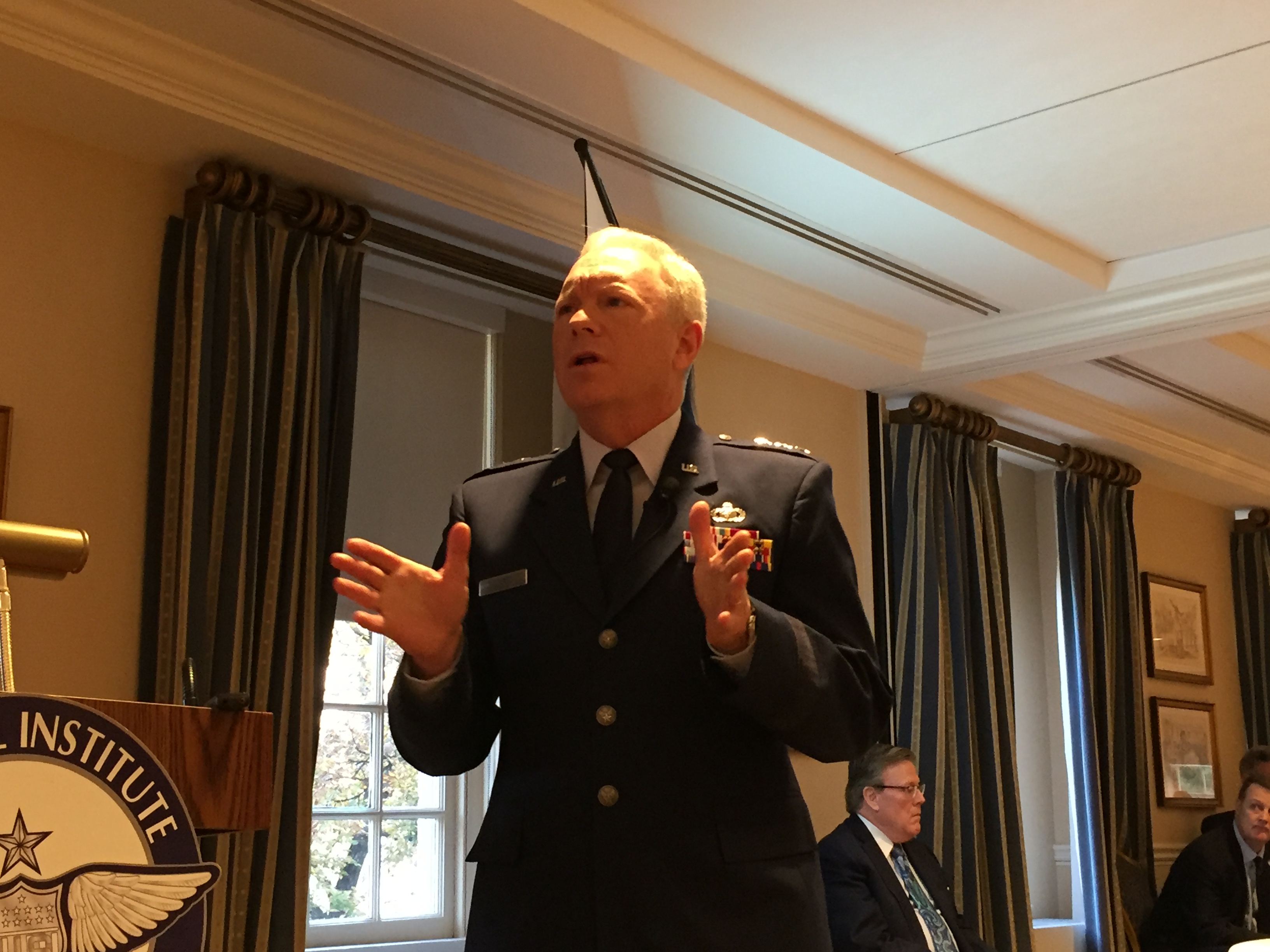
Lt. Gen. John Thompson, commander of the Air Force’s Space and Missile Systems Center, speaks at an AFA Mitchell event Nov. 3 in Washington, D.C. Air Force Magazine photo by Wilson Brissett
When it comes to space acquisition, the Air Force is moving into a new era in which tolerance for risk will be higher and the demand for speed will be greater, Lt. Gen. John Thompson, the new commander of the Space and Missile Systems Center, said Friday at an Air Force Association Mitchell Institute event in Washington, D.C.
SMC is tackling the “need to do some catch-up” by giving more authority to program officers, doing more space experimentation, maximizing its use of Department of Defense regulations, leveraging relationships with commercial space providers, and involving more space operators in program development work, Thompson said.
“We are exiting an era of acquisition reform where the most important things to us were dependability, cost-consciousness, confidence levels, predictability,” he said. “We are quickly moving into another era where innovation and agility are mandated, where we have to learn how to take more risk.”
In order to accomplish this goal, Thompson is working first to “delegate decisions to the right level.” Forty percent of the SMC acquisition portfolio is made up of smaller, acquisition category two and three, programs. “I’ve delegated the responsibility” for those programs to the program executive officers, Thompson said. While he clarified that “I cannot delegate the accountability” for those programs, he insisted that, in the interest of efficiency, “I am not going to approve everything that comes through that Center.”
Thompson is also working to expand SMC’s use of the rapid acquisition authorities of its Operationally Responsive Space office. ORS is “able to deliver not in years but in months,” and the SMC boss wants to maximize that capability to “take a little more risk” in developing new space vehicles.
Taking advantage of ORS will mostly mean “more demonstration, prototyping, and experimentation,” Thompson said. Look for SMC to start “putting up some small bets” in orbit, he said, that will be “useful for operational purposes” but will have experimental value as well. With these on-orbit experiments, “if we prove the concept out,” Thompson said, “then we turn it into a program of record.”
SMC’s people are still looking for other ways to speed up space acquisition within current regulations. “Rapid organizations” in the Air Force have always “figured out a way to hack the 5000 series,” Thompson said, referring to the set of directives that make up DOD acquisition policy.
SMC is also “leveraging commercial space” to make its processes faster. In part, this would mean a shift from “a science perspective” toward “a production mentality,” he said. Industry has moved away from expensive, exquisite satellites and toward deploying more satellites at lower cost. SMC wants to think about “mass producing satellites” and taking advantage of “reusable rockets,” Thompson said. “I’m not willing to say I’m going to adopt all of it,” but he is giving it all a good look.
Finally, Thompson wants to see more “space operators in program offices,” offering input that will improve the systems under development. This is an insight he has brought with him from previous work in aviation programs, Thompson said, and he wants to see it put to work in space acquisition as well.